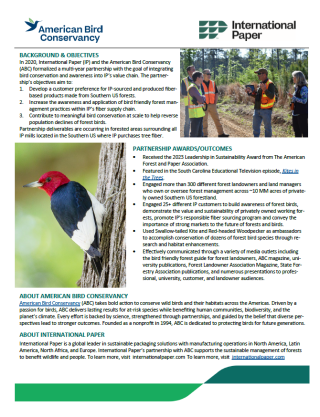The Superior Choice: Why Corrugated Packaging from International Paper Triumphs over RPCs
The choice of which packaging material to use plays a crucial role in a company’s sustainability efforts and many companies are not sure which option is the most sustainable. Inherently, the idea of a reusable option seems more environmentally friendly and sustainable, but that often is not the case. Many companies grapple with the choice between using corrugated packaging or reusable plastic containers (RPCs). RPC suppliers often tout "sustainability" as their primary selling point, but this claim can be misleading. Any claim that the use of RPCs is more sustainable than corrugated packaging should be examined more closely. The following discussion highlights why corrugated packaging is, in fact, the more sustainable option.
Safety Benefits
Corrugated packaging provides a safe and hygienic solution. Made from paper-based materials, corrugated packaging ensures products are securely protected and delivered to consumers in optimal condition. While RPCs may initially seem safe, they require extensive cleaning between uses. Studies performed by University of California, Davis and the University of Guelph in Canada found that sanitation processes are often ineffective, leaving behind bacteria, fungi, and even particulate matter. This can pose a contamination risk, particularly for fresh produce transported in RPCs.
Corrugated Packaging is made from a Sustainable Renewable Resource
Corrugated packaging is made from renewable resources. Trees absorb carbon dioxide from the atmosphere helping mitigate climate change. IP supports sustainable forestry practices, ensuring that the raw materials used in our paper packaging are replenished, promoting environmental stewardship and supporting local economies. Most plastics are made from fossil fuels, like oil and gas, which are not renewable. The entire lifecycle of plastics, from extraction to depletion account for about 3.4% of global greenhouse gas emissions. The UN Environmental Programme estimates that the greenhouse gas emissions related to plastic production could reach 19% by 2040.
Corrugated Packaging Outperforms RPCs in Recyclability and Recycling Rates
Corrugated packaging is not only highly recyclable but also boasts impressive recycling rates. According to the American Forest & Paper Association (AF&PA), the recycling rate for corrugated packaging in 2023 was between 71-76%. International Paper alone processes 7 million tons of old corrugated containers (OCC) annually, making it one of the largest users of recycled content in the U.S. In contrast, the plastic recycling rate in the U.S. was a mere 5-6% in 2021. In many parts of the US, plastic recycling infrastructure is limited, making it difficult to recycle RPCs. Because each type of plastic has unique properties and chemical compositions, which means they have different melting points and chemical structures, different types of plastics can’t be recycled together,
Unfortunately, you can probably guess where the remaining 95-96% of plastic waste often ends up. In fact, a quick Google image search will confirm that it ends up in our oceans and landfills, contributing to pollution. About 50% of plastic waste ends up in landfills, while a considerable amount ends up in the environment where is breaks down into microplastics.
By maintaining a high recovery rate, corrugated packaging turns used packaging into new packaging through true circularity. This minimizes the need for raw materials and reduces energy consumption. It also helps to cut down waste and to foster a more sustainable approach to packaging. While paper fibers are not infinitely recyclable, the waste collection stream for our products is strong and ensures that most paper makes its way back into the product cycle to become new products again and again.
Biodegradability and Environmental Impact Benefits
Unlike plastic, corrugated boxes are biodegradable. Even when they do not make it into the recycling stream, boxes can break down naturally, reducing long-term pollution. Plastic containers, on the other hand, can take anywhere from 20 – 500 years to decompose. Even still, plastic will not fully decompose, the pieces merely get smaller. These smaller pieces, known as micro and nano plastics, can be found in nearly every part of the environment and have even been detected in human organs. This makes corrugated packaging an eco-friendlier option, helping to reduce plastic pollution that harms ecosystems and wildlife.
Consumer Preference for Paper Packaging
Consumers increasingly prefer paper packaging due to its safety, environmental benefits, and practical advantages. Studies show that 71% of consumers believe foods and beverages should be packaged with healthier materials, and 89% of consumers favor paper over plastic. This reflects the growing demand for sustainable, eco-friendly packaging solutions.
You Should Feel Good about Choosing Corrugated Paper Packaging
The environmental benefits of IP’s corrugated packaging make it the superior choice for businesses aiming to reduce their ecological footprint. From enhanced consumer safety and hygiene to higher recyclability and support for a circular economy, corrugated packaging provides a sustainable and consumer-friendly alternative. By choosing corrugated paper packaging from International Paper, businesses can contribute to a healthier planet while meeting the growing demand for sustainable products.


